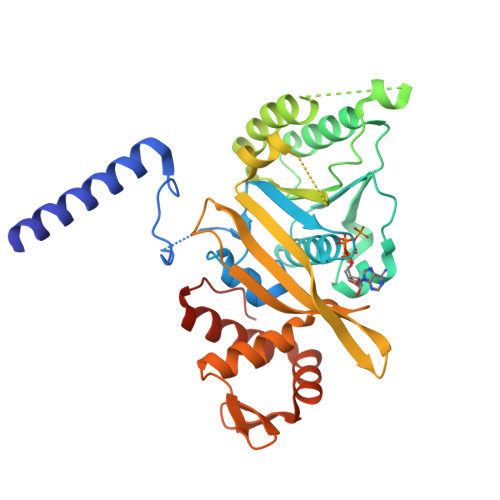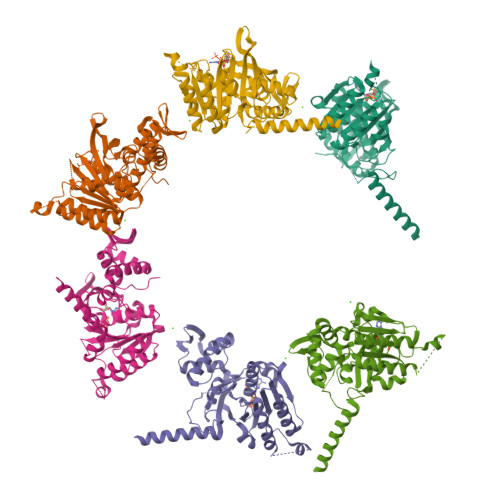Structural and Functional Studies of H. seropedicae RecA Protein - Insights into the Polymerization of RecA Protein as Nucleoprotein Filament.
Leite, W.C., Galvao, C.W., Saab, S.C., Iulek, J., Etto, R.M., Steffens, M.B., Chitteni-Pattu, S., Stanage, T., Keck, J.L., Cox, M.M.(2016) PLoS One 11: e0159871-e0159871
- PubMed: 27447485
- DOI: https://doi.org/10.1371/journal.pone.0159871
- Primary Citation of Related Structures:
5JRJ - PubMed Abstract:
The bacterial RecA protein plays a role in the complex system of DNA damage repair. Here, we report the functional and structural characterization of the Herbaspirillum seropedicae RecA protein (HsRecA). HsRecA protein is more efficient at displacing SSB protein from ssDNA than Escherichia coli RecA protein. HsRecA also promotes DNA strand exchange more efficiently. The three dimensional structure of HsRecA-ADP/ATP complex has been solved to 1.7 Å resolution. HsRecA protein contains a small N-terminal domain, a central core ATPase domain and a large C-terminal domain, that are similar to homologous bacterial RecA proteins. Comparative structural analysis showed that the N-terminal polymerization motif of archaeal and eukaryotic RecA family proteins are also present in bacterial RecAs. Reconstruction of electrostatic potential from the hexameric structure of HsRecA-ADP/ATP revealed a high positive charge along the inner side, where ssDNA is bound inside the filament. The properties of this surface may explain the greater capacity of HsRecA protein to bind ssDNA, forming a contiguous nucleoprotein filament, displace SSB and promote DNA exchange relative to EcRecA. Our functional and structural analyses provide insight into the molecular mechanisms of polymerization of bacterial RecA as a helical nucleoprotein filament.
Organizational Affiliation:
Department of Physics, Ponta Grossa State University (UEPG), Av. Carlos Cavalcanti, 4748, CEP. 84.030-900, Ponta Grossa, PR, Brazil.





















